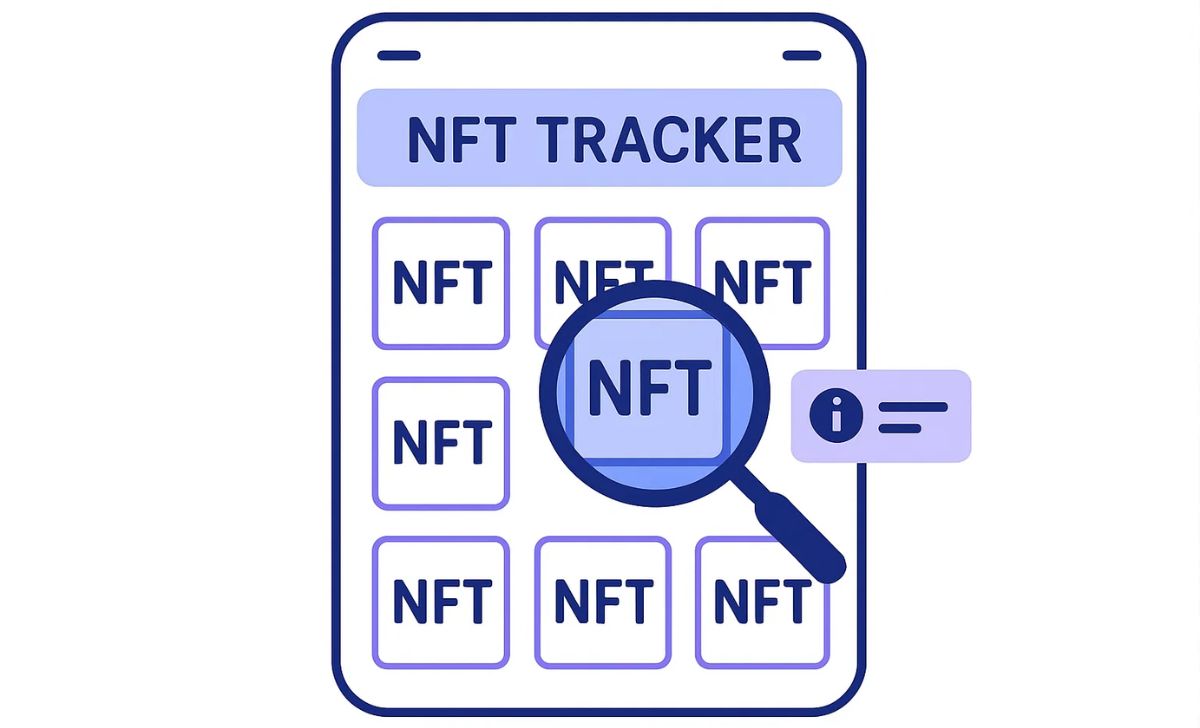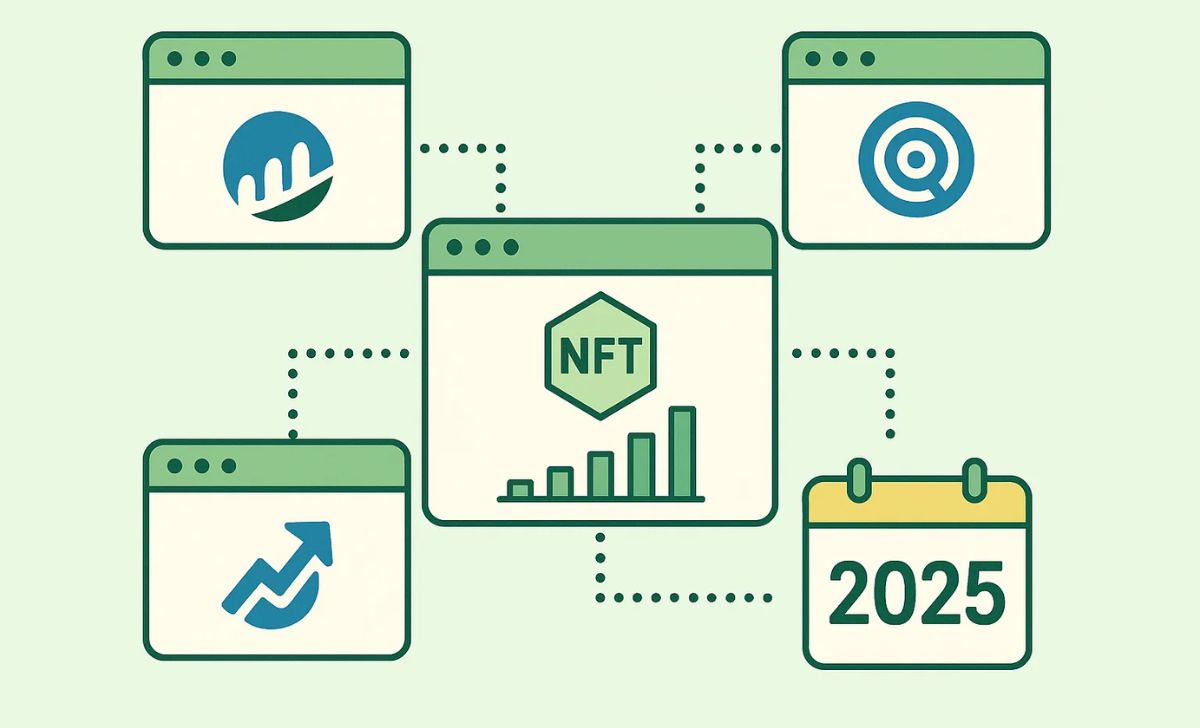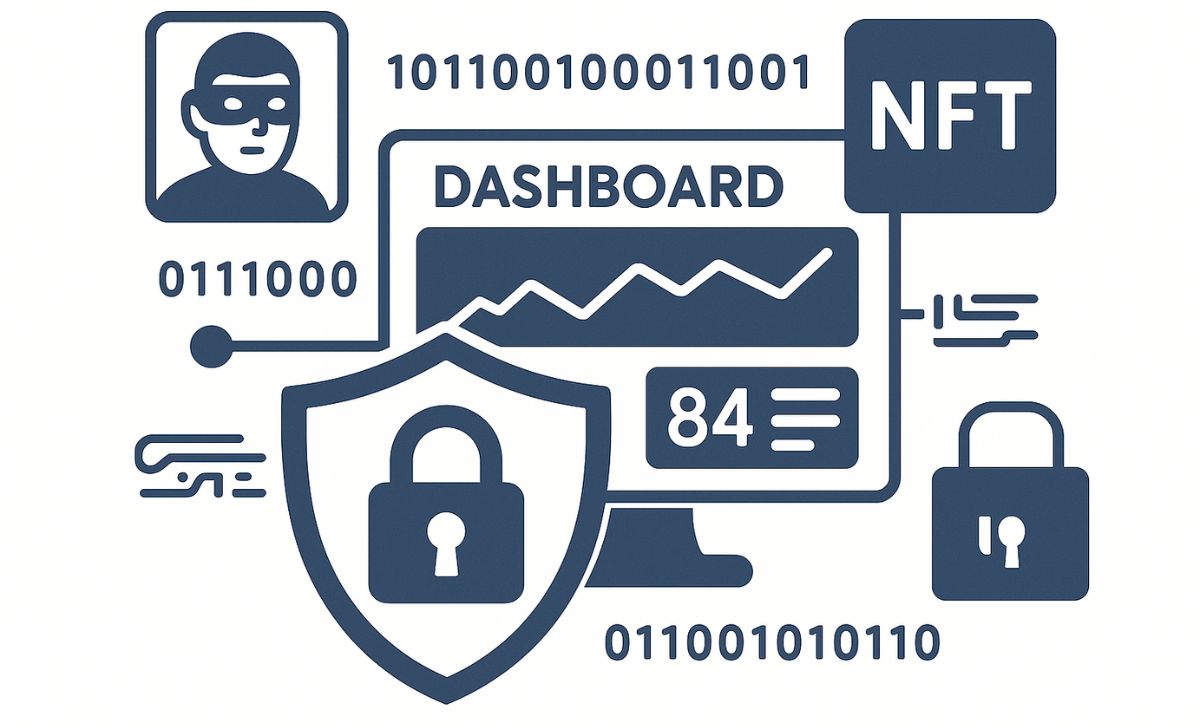An NFT tracker is a tool that helps you monitor, manage, and analyze your NFT collections across multiple blockchains such as Ethereum, Solana, and Polygon in a centralized and convenient way. Modern NFT trackers offer real-time data updates, multi-wallet synchronization, display of market values, transaction history, as well as trend analysis tools and price alert features for notable NFTs.
In terms of security, NFT trackers use wallet connections that do not store private keys, encrypt information, and apply multi-layer authentication to protect user assets. The user experience is enhanced with intuitive interfaces, simple operations, detailed performance reports, and multi-platform support (web, mobile). For more details and to choose the right NFT tracker, keep reading the article from TOPCOIN9 below!
What Is an NFT Tracker?

An NFT tracker is a software tool or platform that allows users to monitor, analyze, and manage non-fungible tokens (NFTs) across various marketplaces and blockchains (Wikipedia, 2023). NFT trackers provide real-time data on NFT transactions, prices, ownership history, and market trends, helping investors, collectors, and enthusiasts make informed decisions (Shardeum, 2024).
Key functions of an NFT tracker include:
- Portfolio Management: Track the value and performance of NFT holdings across multiple wallets and platforms (Wikipedia, 2023).
- Market Analytics: Access real-time price alerts, sales history, and trending collections to identify opportunities and risks (Shardeum, 2024).
- Discovery Tools: Explore new and popular NFT projects, monitor rarity scores, and analyze asset attributes (Shardeum, 2024).
- Security and Compliance: Some trackers integrate tools to identify suspicious activity and support compliance with regulatory guidelines (U.S. Department of the Treasury, 2024).
For maximum safety when using NFT trackers, it is recommended to regularly run an av scaner (antivirus scanner) on your device. An av scaner helps detect and remove malware or spyware that could compromise your wallet connections or sensitive NFT data, ensuring your digital assets remain secure while you track and manage NFTs across blockchains.
By aggregating and organizing blockchain data, NFT trackers empower users to effectively navigate the rapidly evolving NFT market and optimize their strategies (Wikipedia, 2023; Shardeum, 2024).
With a clear understanding of what an NFT tracker is and its significance in monitoring digital collectibles, the next step is to explore some of the most popular NFT tracking tools expected to lead the market in 2025.
Popular NFT Tracking Tools in 2025

NFT tracking tools are essential for monitoring, analyzing, and managing non-fungible tokens (NFTs) across various blockchains and marketplaces, providing users with real-time insights and data-driven decision-making (Wikipedia, 2023).
Leading NFT tracking tools in 2025 include:
Nansen
Offers advanced analytics, wallet activity tracking, and real-time market insights, making it a top choice for both novice and experienced NFT investors (HeLa Labs, 2025).
DappRadar
Tracks decentralized applications and NFTs, providing portfolio management, discovery features, and analytics across multiple blockchains (HeLa Labs, 2025).
OpenSea
The largest NFT marketplace, featuring built-in tracking for collections, transactions, and asset performance (HeLa Labs, 2025).
NFTBank
Specializes in portfolio management, real-time valuation, and financial analytics, with AI-powered price estimates and tax solutions (Geekflare, 2025).
CryptoSlam
Delivers real-time data on NFT sales, transaction history, and market trends, supporting multiple blockchains and ranking top collections (Geekflare, 2025).
Zapper
Integrates DeFi and NFT tracking, allowing users to manage and analyze assets across over 50 networks through an intuitive dashboard (Geekflare, 2025).
NFTGo
Provides AI-driven analytics, whale tracking, portfolio management, and rarity analysis, helping users discover trending NFTs and optimize investments (Geekflare, 2025).
Etherscan
A blockchain explorer with NFT tracking capabilities, offering detailed transaction, ownership, and performance data for Ethereum-based NFTs (Shardeum, 2024).
These tools empower users to stay ahead in the dynamic NFT market by offering comprehensive analytics, portfolio management, and real-time alerts, ensuring informed and strategic participation in NFT trading and investment (Wikipedia, 2023; HeLa Labs, 2025; Geekflare, 2025).
After reviewing the top NFT tracking tools, it’s important to examine the key features that make these trackers essential for collectors and investors alike.
Key Features of NFT Trackers

NFT trackers provide essential tools for monitoring, analyzing, and managing non-fungible tokens (NFTs) across multiple blockchains and marketplaces, empowering users with actionable insights and security features (Wikipedia, 2023).
- Real-Time Data and Analytics: Track live NFT transactions, price changes, sales volumes, and market trends to support timely and informed decisions (Wikipedia, 2023; HeLa Labs, 2025).
- Portfolio Management: Monitor the value and performance of NFT holdings across different wallets and platforms, with historical data and customizable dashboards (Shardeum, 2024; HeLa Labs, 2025).
- Market Discovery and Rarity Analysis: Explore trending collections, analyze rarity scores, and assess asset uniqueness to identify valuable opportunities (Shardeum, 2024; Wikipedia, 2023).
- Security and Compliance Tools: Some trackers integrate features to detect suspicious activity, support regulatory compliance, and help prevent fraud or illicit use (U.S. Department of the Treasury, 2024; National Archives, 2024).
- User-Friendly Interface: Intuitive dashboards and clear data visualizations ensure accessibility for both beginners and advanced users (HeLa Labs, 2025).
- Cross-Platform and Multi-Chain Support: Track NFTs across various blockchains and marketplaces for a comprehensive view of assets (Shardeum, 2024; Wikipedia, 2023).
These features ensure that NFT trackers are indispensable for collectors, investors, and organizations seeking transparency, security, and efficiency in the fast-evolving NFT market (Wikipedia, 2023; HeLa Labs, 2025; U.S. Department of the Treasury, 2024).
With these core features in mind, attention should also be given to the security and privacy considerations that users must address when using NFT trackers.
Security and Privacy Considerations

Security and privacy are critical concerns when using NFT trackers and managing digital assets (Wikipedia, 2023; U.S. Department of the Treasury, 2024). NFT trackers often require access to blockchain addresses and transaction data, making it essential to choose platforms with strong encryption, secure authentication, and transparent data handling practices (Wikipedia, 2023; U.S. Department of the Treasury, 2024).
- Data Protection: Reputable NFT trackers implement robust security protocols to safeguard user information and prevent unauthorized access or data breaches (Wikipedia, 2023).
- Privacy Controls: Users should verify that NFT trackers do not collect unnecessary personal information and comply with relevant privacy regulations, such as GDPR or CCPA (U.S. Department of the Treasury, 2024).
- Transparency: Platforms should clearly disclose their data collection, storage, and sharing policies, empowering users to make informed choices about their privacy (Wikipedia, 2023).
- Regulatory Compliance: Some NFT trackers integrate compliance tools to detect suspicious activities, support anti-money laundering (AML) efforts, and align with government guidelines (U.S. Department of the Treasury, 2024).
By prioritizing security and privacy, users can confidently leverage NFT trackers while minimizing risks related to data exposure, fraud, and regulatory issues (Wikipedia, 2023; U.S. Department of the Treasury, 2024).
Beyond security and privacy, the user experience and interface design play a crucial role in determining the effectiveness and accessibility of NFT tracking tools.
User Experience and Interface
User experience (UX) and interface design are critical factors in the effectiveness of NFT trackers, directly impacting how users interact with and benefit from these tools (Wikipedia, 2023; HeLa Labs, 2025). Modern NFT trackers prioritize intuitive navigation, clear data visualization, and customizable dashboards to accommodate both beginners and experienced users (HeLa Labs, 2025; Shardeum, 2024).
- Intuitive Interface: Leading NFT trackers feature user-friendly layouts, allowing users to easily input wallet addresses, filter collections, and access real-time data without technical barriers (HeLa Labs, 2025; Shardeum, 2024).
- Customizable Dashboards: Users can tailor dashboards to display preferred metrics, such as portfolio value, price trends, and rarity scores, enhancing usability and personal relevance (HeLa Labs, 2025).
- Responsive Design: NFT trackers are optimized for various devices, ensuring seamless access and interaction on desktops, tablets, and smartphones (Wikipedia, 2023).
- Clear Data Visualization: Real-time analytics, charts, and alerts are presented in an accessible format, enabling users to make informed decisions quickly (HeLa Labs, 2025; Shardeum, 2024).
- Accessibility: Platforms strive for broad accessibility, offering multilingual support and features that cater to users with diverse needs (Wikipedia, 2023).
By focusing on user-centric design, NFT trackers empower collectors, investors, and enthusiasts to efficiently monitor, analyze, and manage their digital assets in a rapidly evolving market (Wikipedia, 2023; HeLa Labs, 2025; Shardeum, 2024).
In summary, NFT trackers offer a comprehensive overview of the NFT market, equipping users with powerful tracking tools, robust security features, and a seamless user experience. As the NFT ecosystem evolves, choosing the right tracker is essential for effective asset management and informed decision-making. For expert insights and the latest updates on NFT trackers, visit TOPCOIN9 to stay ahead in the dynamic world of digital assets.

Sophia Mitchell is a passionate crypto educator with 6+ years of experience in blockchain training and community building. She has led educational initiatives for major crypto platforms and now empowers the TopCoin9 audience with valuable insights into Web3, staking, and DeFi.
Email: [email protected]












